Plastics play an essential role in the food processing and packaging industry. Although different types of plastics are used in various ways in the food industry, not all plastics are suitable for contact with foods and other consumables.
This article will explore the definition of food grade plastic and its shared features. As well as the common uses and different types of plastics safe for food.
Introduction to Food Grade Plastic
Food grade plastic refers to plastic materials that are specifically designed and manufactured to be safe for direct contact with food.
Generally, food grade rating from 1-7 is placed below the plastic product or marked green for identification.
Common examples of food grade plastics include high density polyethylene (HDPE) and polyethylene terephthalate (PET). HDPE is widely used in milk jugs, while PET is commonly found in soda bottles and salad dressing containers.
These plastics are held to higher standards than those used for non-food applications, ensuring that they do not leach harmful substances or contaminants into food products. Food grade plastics are essential for maintaining food safety throughout processing, packaging, and storage.
By using food grade plastics, manufacturers can ensure that their products meet strict food safety requirements, protecting consumers and maintaining the integrity of food products from production to consumption.
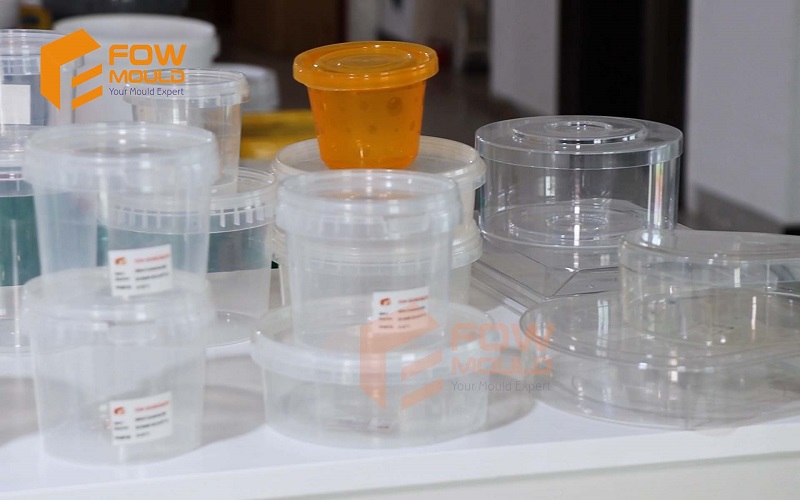
Types of Food Grade Plastics
Food grade plastics are specifically designed to be safe for contact with food, meeting stringent regulatory standards to prevent contamination or harmful chemical leaching.
Below is an overview of the most common types of food grade plastics, their properties, typical uses, and a comparison of their strengths and limitations.
Polyethylene Terephthalate (PET or PETE)
PET is commonly used for thicker food containers, such as 2-liter soda bottles, peanut butter jars, and salad dressing bottles.
A key advantage of PET is its status as a PET plastic food safe material, approved by global regulatory agencies for food contact due to its non-toxic and stable properties.
Additionally, PET plastic is highly recyclable, making it an environmentally sustainable choice for food packaging.
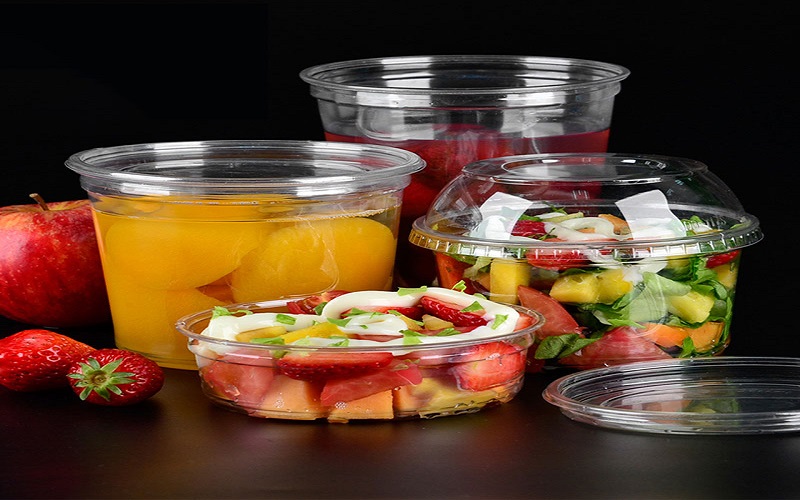
High Density Polyethylene (HDPE)
HDPE food safe containers are widely used for packaging and storing food products because they do not leach harmful chemicals. They are made from lightweight, strong materials that can easily be molded into different shapes and sizes.
HDPE plastic is commonly used in the production of milk containers, juice bottles, and cereal box liners, as well as grocery bags and other types of food packaging.
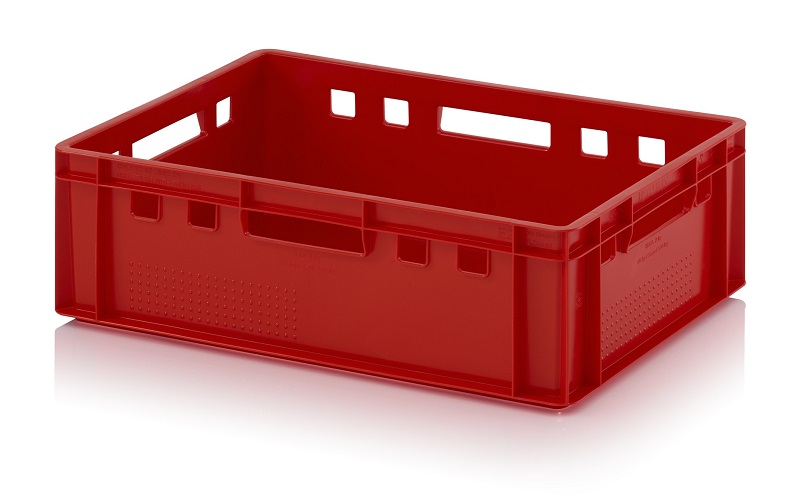
Low-Density Polyethylene(LDPE)
LDPE is a flexible plastic that is useful in the food industry. It is commonly used to make food bags, such as bread bags and produce bags. LDPE is also used to make squeeze bottles and lids for condiments. It is safe for food contact and provides an excellent barrier against moisture and air.
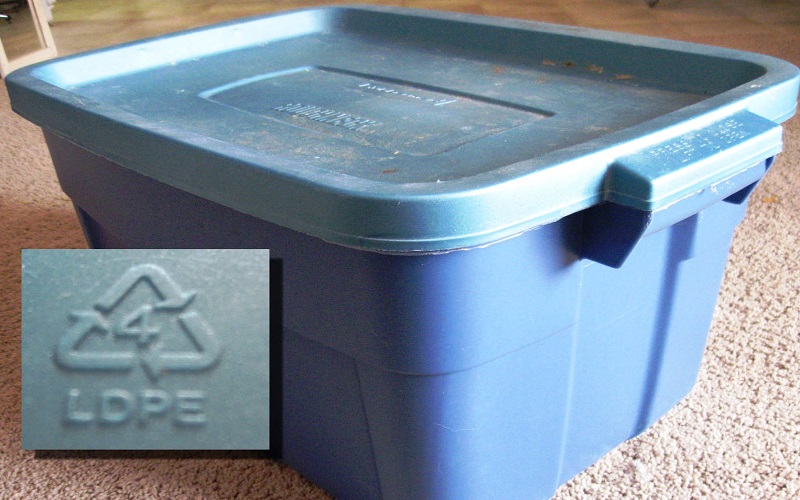
Polyvinyl Chloride(PVC)
PVC is commonly used in the food industry to package consumable foods. PVC’s lightweight and ease of molding into different shapes and sizes make it a suitable choice for various packaging applications for different brands.
PP (Polypropylene)
Polypropylene plastic is one of the most commonly used FDA-approved food-grade plastics (21 CFR 177.1520). It is valued for its high heat resistance, toughness, and chemical stability , making it ideal for both hot-fill and microwave-safe applications .
PP material is commonly used in food packaging to make yogurt cups, juice containers , cream cheese containers and sour cream containers, as well as prescription drug bottles.
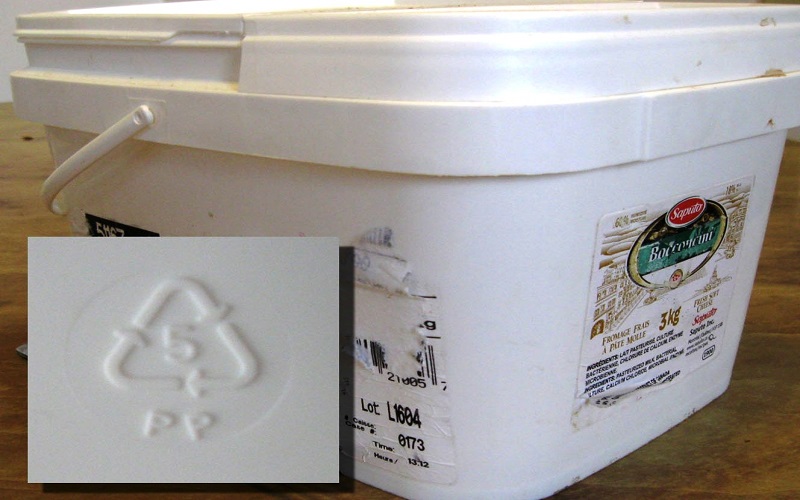
Polycarbonate (PC)
Polycarbonate is a highly versatile and polycarbonate food safe plastic, valued for its strength, clarity, and heat resistance in applications like hospital trays and baby bottles. While it offers significant advantages, its higher cost and recycling challenges require careful consideration.
By choosing BPA-free, certified PC products, consumers and industries can safely leverage its benefits for food contact applications while addressing safety and sustainability concerns.
Other food grade plastics like acrylic food containers and nylon food utensils are also used for food storage and preparation due to their safety and durability.
Acrylic food safe containers are FDA approved but should not be exposed to high heat. Nylon food safe utensils are popular for heat resistant and non-leaching properties.
| Plastic Type | Strengths | Limitations | Best For |
|---|---|---|---|
| HDPE | Durable, recyclable, chemical-resistant | Opaque, less versatile for clear packaging | Milk jugs, storage containers |
| LDPE | Flexible, lightweight, recyclable | Low heat resistance | Plastic wrap, squeeze bottles |
| PP | Heat-resistant, durable, recyclable | Brittle at low temperatures, less transparent | Microwave containers, yogurt tubs |
| PET | Clear, recyclable, strong | Limited heat resistance | Water bottles, food jars |
| PC | Tough, clear, heat-resistant | Expensive, BPA concerns, less recyclable | Reusable bottles, equipmen |
Regulations and Certifications for Food Grade Plastics
The safety and quality of food grade plastics are ensured through strict regulations and certifications set by organizations such as the Food and Drug Administration (FDA) and the International Standards Organization (ISO).
These regulatory bodies establish comprehensive guidelines that food grade plastics must meet before they can be used in the food industry.
To be FDA compliant, plastic materials must undergo rigorous testing for chemical resistance, heat resistance, and non-toxicity. This ensures that the plastics will not react with food or release harmful substances, even when exposed to high temperatures or acidic ingredients.
Certifications like the Food Safety System Certification (FSSC 22000) provide additional assurance that food grade plastic products meet international standards for food safety and quality.
FDA approved plastics, such as HDPE and PET, are widely trusted in the food industry for packaging and storage due to their proven safety and reliability.
By adhering to these regulations and obtaining the necessary certifications, manufacturers can guarantee that their food grade plastics are safe for use in direct contact with food, supporting the highest standards of food safety.
Applications of Food Grade Plastics
Food grade plastics are widely used across various sectors within the food industry due to their safety, durability, and versatility. Some of the primary applications include:
Food Storage Containers
Food grade plastic containers are essential for safely storing leftovers, fresh produce, and dry goods. These containers prevent contamination and help maintain the freshness of food over long term food storage.
Plastic Bottles and Beverage Containers
Many beverages, including water, milk, juice, and soda, are packaged in food grade plastic bottles made from materials like PET and HDPE. These plastics ensure that the beverage containers do not leach chemicals, preserving the quality and safety of the drinks.
Plastic Bags and Cling Wrap
Food grade plastic bags, such as bread bags and produce bags, as well as cling wrap, are commonly used for packaging and carrying food. They provide effective barriers against moisture and contaminants, extending the shelf life of perishable items.
Food Processing Equipment
Food grade plastics are also used in manufacturing food processing equipment components, such as conveyor belts, cutting boards, and utensils. These plastics are chosen for their high heat resistance, durability, and non-toxic properties, ensuring food safety during processing.
Reusable Plastic Containers
Many food safe plastic containers are designed to be dishwasher safe and reusable, providing an eco-friendly and convenient option for consumers. These reusable containers are ideal for meal prep, transport, and storage without compromising food safety.
Food Packaging Products
Food grade plastics are extensively used in food packaging products, including dairy, sauces like tomato sauce, condiments, and snacks. The packaging protects the food from contamination and damage while maintaining its quality.
By utilizing food grade materials in these applications, manufacturers and consumers alike can ensure that food products remain safe from harmful chemicals and contaminants throughout handling, storage, and consumption.
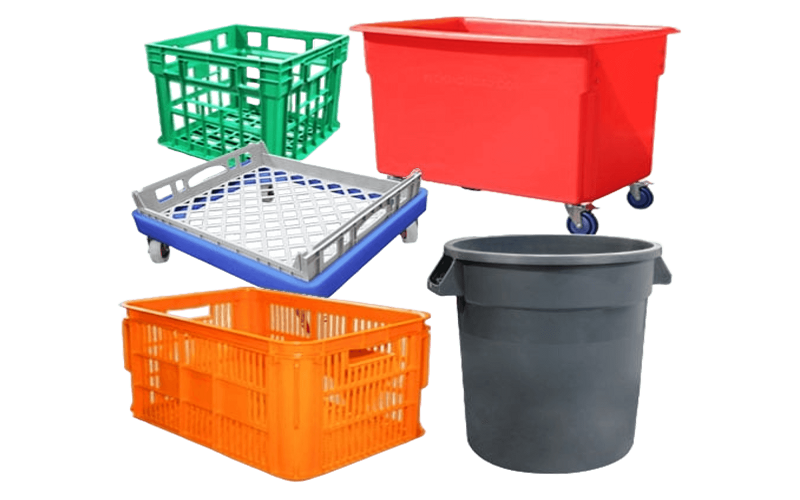
Benefits Of Food Grade Plastics
Food grade plastics offer numerous advantages that make them indispensable in the food industry.
Safety for Food Contact
Firstly, they provide a safe barrier between food and external contaminants, ensuring that food products remain hygienic and free from harmful chemicals.
Their non-toxic nature and compliance with strict regulatory standards, such as FDA approval, guarantee that these plastics do not leach harmful substances into food, even under varying temperatures and storage conditions.
Durability And Versatility
Additionally, food grade plastics are highly versatile and durable. They can be molded into various shapes and sizes to accommodate different food packaging and storage needs, from flexible plastic bags to rigid containers and bottles.
Their lightweight nature also contributes to reduced transportation costs and environmental impact compared to heavier alternatives like glass containers.
Chemical Resistance
Another significant benefit is their excellent resistance to moisture, chemicals, and impact, which helps preserve the freshness and quality of food during long term food storage.
Many food safe plastic containers are also microwave safe and dishwasher safe, offering convenience for consumers in food preparation and storage.
Recyclability
Moreover, many food grade plastics such as HDPE and PET are recyclable, supporting sustainability efforts within the food packaging industry. This recyclability helps reduce plastic waste and promotes a circular economy.
Overall, the use of food grade plastics enhances food safety, extends shelf life, improves convenience, and supports environmental responsibility, making them a preferred choice in the food processing and packaging sectors.
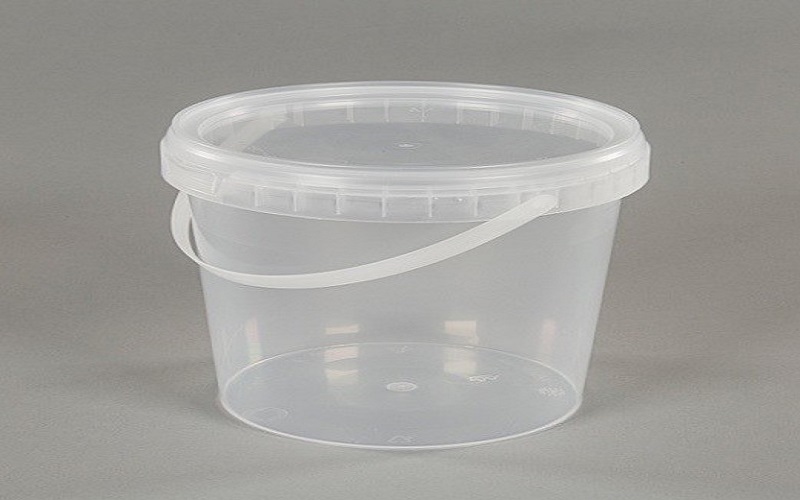
Conclusion
Food-grade plastic is a vital component of the food packaging and storage industry. It is essential to choose the right type of food-safe plastic for the specific application to maintain the integrity and safety of the food products being packaged or stored.
If you’re looking for high-quality food-grade plastic packaging solutions, FOW Mould can help. We can meet your food packaging need in the best way possible using the finest product. Contact us today to learn more about their services.
